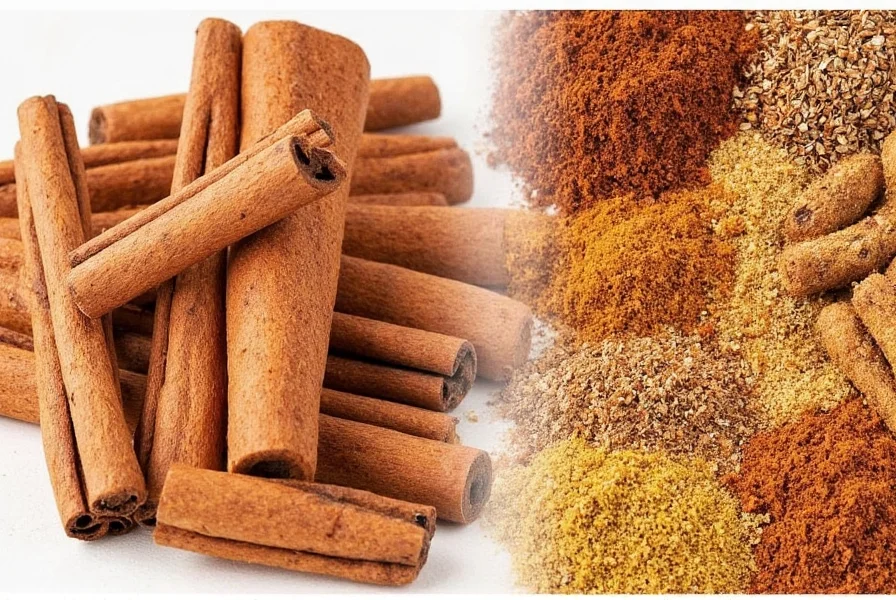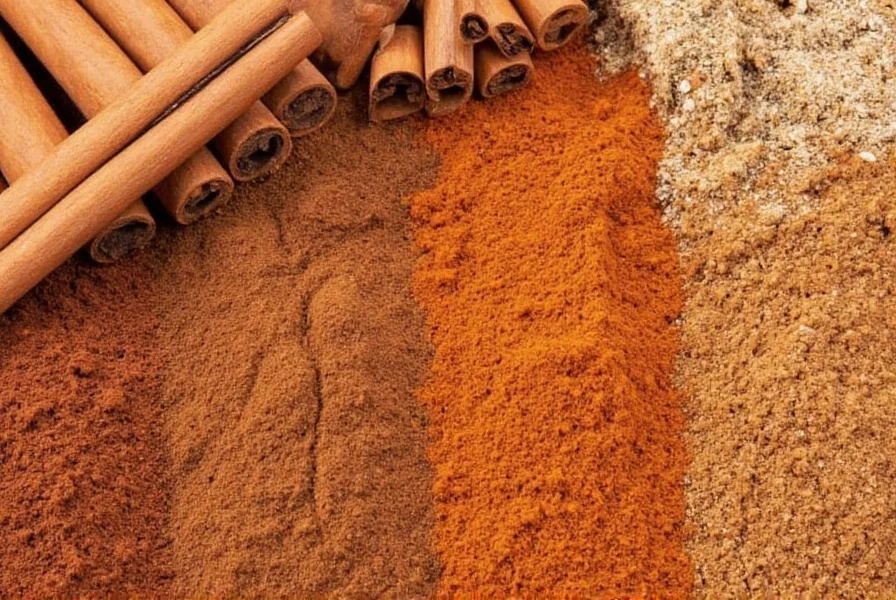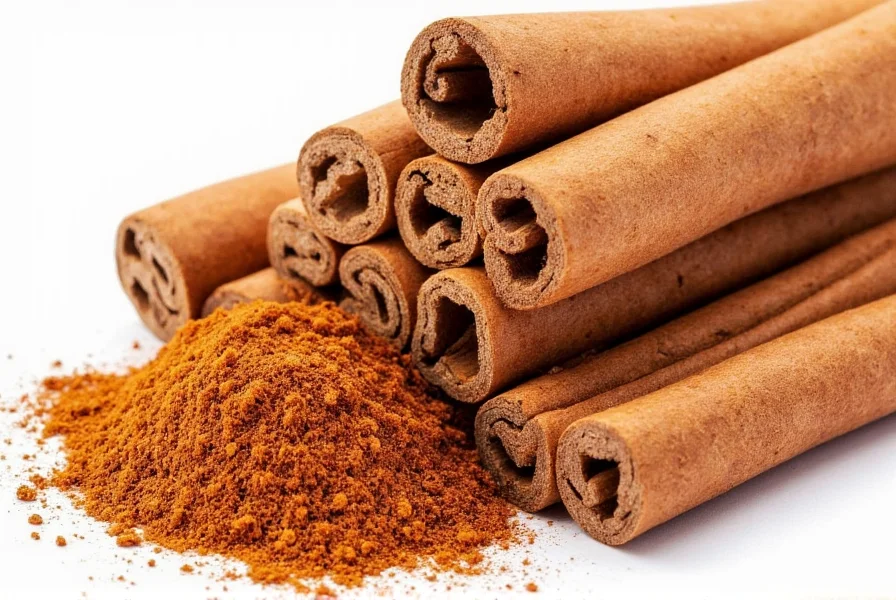Cinnamon stands as one of the world's most beloved spices, cherished for its distinctive aroma and complex flavor profile. This ancient spice, harvested from the inner bark of specific tree species, has journeyed from traditional medicine cabinets to modern kitchen pantries across the globe. Understanding the different types, properties, and applications of cinnamon spice provides valuable insight for both culinary enthusiasts and health-conscious consumers.
Understanding Cinnamon Varieties
Not all cinnamon is created equal. The spice market primarily features two distinct types that differ significantly in composition, flavor, and safety profile.
Ceylon Cinnamon (Cinnamomum verum)
Often labeled as "true cinnamon," Ceylon cinnamon originates from Sri Lanka and southern India. This variety features multiple delicate layers that form a tight, hollow tube when dried. Ceylon cinnamon contains significantly lower levels of coumarin—a compound that can cause liver issues in high doses—making it the preferred choice for regular consumption. Its flavor profile is more subtle, citrusy, and complex compared to its counterpart.
Cassia Cinnamon (Cinnamomum cassia)
Commonly found in supermarkets across North America and Europe, Cassia cinnamon comes primarily from China and Indonesia. It has a single, thick layer of bark that curls into a dense stick. Cassia contains substantially higher coumarin levels, which necessitates moderation in consumption. Its flavor is stronger, spicier, and more pungent than Ceylon variety.
| Characteristic | Ceylon Cinnamon | Cassia Cinnamon |
|---|---|---|
| Origin | Sri Lanka, India | China, Indonesia |
| Coumarin Content | Low (0.004%) | High (1-5%) |
| Flavor Profile | Mild, citrusy, complex | Strong, spicy, pungent |
| Physical Structure | Multiple thin layers, soft texture | Single thick layer, hard texture |
| Price Point | Higher cost | More affordable |

Historical Significance and Production Process
Cinnamon's history spans thousands of years, with references appearing in ancient Egyptian texts and biblical passages. Historically valued more than gold, this spice fueled exploration and trade routes between Asia and Europe. The production process remains largely traditional: farmers harvest cinnamon trees after two years of growth, remove the outer bark, then carefully peel the inner bark which naturally curls as it dries.
Modern cultivation occurs primarily in Sri Lanka (for Ceylon), China, Indonesia, and Vietnam (for Cassia varieties). Sustainable harvesting practices have become increasingly important as demand grows, with many producers now implementing forest management systems to ensure long-term viability of cinnamon trees.
Nutritional Composition and Health Research
The distinctive properties of cinnamon spice come from its complex chemical composition. The primary active compound, cinnamaldehyde, accounts for approximately 60-90% of cinnamon's essential oil and contributes significantly to its characteristic flavor and aroma. Additional compounds include eugenol, linalool, and coumarin, with proportions varying between cinnamon types.
Scientific research has investigated several potential health benefits associated with cinnamon consumption:
- Blood sugar regulation: Multiple studies suggest cinnamon may improve insulin sensitivity and help moderate blood glucose levels after meals, though effects appear modest and temporary
- Antioxidant properties: Cinnamon ranks among the most antioxidant-rich spices, with an ORAC value (Oxygen Radical Absorbance Capacity) significantly higher than many fruits and vegetables
- Anti-inflammatory effects: Laboratory research indicates cinnamon compounds may reduce inflammation markers, though human studies remain limited
- Microbial properties: Traditional use as a food preservative aligns with research showing cinnamon's effectiveness against certain bacteria and fungi
It's crucial to note that while these potential benefits are promising, most research has been conducted in laboratory settings or with concentrated extracts. The amounts typically consumed as a spice in regular diets may not produce significant therapeutic effects. Individuals taking medications, particularly for diabetes or liver conditions, should consult healthcare providers before consuming cinnamon in medicinal quantities.
Culinary Applications and Pairing Suggestions
Cinnamon's versatility makes it valuable in both sweet and savory applications across global cuisines. Understanding how to maximize its flavor potential enhances culinary results.
Sweet Applications
In baking, cinnamon works exceptionally well with apples, pears, and other stone fruits. It complements chocolate in mole sauces and desserts, and enhances coffee and hot chocolate. For optimal flavor release in baked goods, combine ground cinnamon with a small amount of liquid (like milk or oil) before incorporating into recipes.
Savory Applications
Many Middle Eastern and North African cuisines feature cinnamon in savory dishes. It appears in Moroccan tagines, Persian rice dishes, and Indian curries. In Mexican cuisine, cinnamon enhances chocolate-based mole sauces. When using cinnamon in savory applications, pair it with complementary spices like cumin, coriander, and cardamom for balanced flavor profiles.
Optimal Usage Techniques
Whole cinnamon sticks provide more subtle flavor and maintain potency longer than ground cinnamon. For beverages and slow-cooked dishes, add whole sticks early in the cooking process. When using ground cinnamon in baking, incorporate it with other dry ingredients to ensure even distribution. Toasting whole cinnamon sticks briefly before grinding releases additional aromatic compounds.

Quality Assessment and Storage Guidelines
Selecting high-quality cinnamon and storing it properly preserves its flavor and potential health benefits. Fresh cinnamon should have a strong, sweet aroma and vibrant color. Dull appearance or weak scent indicates age and diminished quality.
When purchasing ground cinnamon, check for fine, uniform texture without clumps. Whole sticks should be brittle enough to snap cleanly. Be aware that some lower-quality products may contain fillers like cassia marketed as Ceylon, so reputable sources are essential when seeking specific varieties.
Proper storage extends cinnamon's shelf life significantly. Keep cinnamon in an airtight container away from light, heat, and moisture. Ground cinnamon maintains optimal flavor for 6-12 months, while whole sticks can remain potent for 2-3 years when stored correctly. Freezing cinnamon is unnecessary and may introduce moisture that degrades quality.
Frequently Asked Questions
What's the primary difference between Ceylon and Cassia cinnamon?
The main differences lie in coumarin content, flavor profile, and physical structure. Ceylon cinnamon contains minimal coumarin (making it safer for regular consumption), has a more delicate citrusy flavor, and features multiple thin layers that form soft, hollow quills. Cassia cinnamon contains higher coumarin levels, has a stronger, spicier taste, and consists of a single thick, hard layer.
How much cinnamon can be safely consumed daily?
For Cassia cinnamon, health authorities recommend limiting intake to no more than 1-2 teaspoons (2-4 grams) daily due to its higher coumarin content. Ceylon cinnamon, with significantly lower coumarin levels, can be consumed in larger quantities, though moderation remains advisable. Individuals with liver conditions should consult healthcare providers before regular consumption.
Can cinnamon help regulate blood sugar levels?
Some research suggests cinnamon may modestly improve insulin sensitivity and help moderate post-meal blood sugar spikes, particularly with regular consumption. However, effects are generally temporary and not sufficient to replace diabetes medications. The American Diabetes Association doesn't currently recommend cinnamon as a standard treatment for blood sugar management.
What's the best way to store cinnamon to maintain freshness?
Store cinnamon in an airtight container away from light, heat, and moisture. Whole cinnamon sticks maintain potency for 2-3 years under proper storage conditions, while ground cinnamon remains optimal for 6-12 months. Avoid storing near stoves or in clear containers that expose the spice to light, which accelerates flavor degradation.
How can I tell if my cinnamon has gone bad?
Expired cinnamon loses its characteristic aroma and flavor. If your cinnamon has a weak scent or tastes bland rather than warm and sweet, it's likely past its prime. Ground cinnamon may also develop clumps from moisture exposure. While expired cinnamon isn't harmful, it won't provide the same culinary benefits as fresh product.











 浙公网安备
33010002000092号
浙公网安备
33010002000092号 浙B2-20120091-4
浙B2-20120091-4